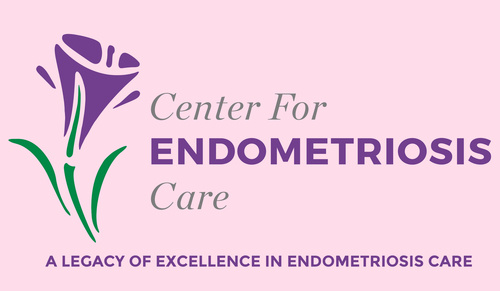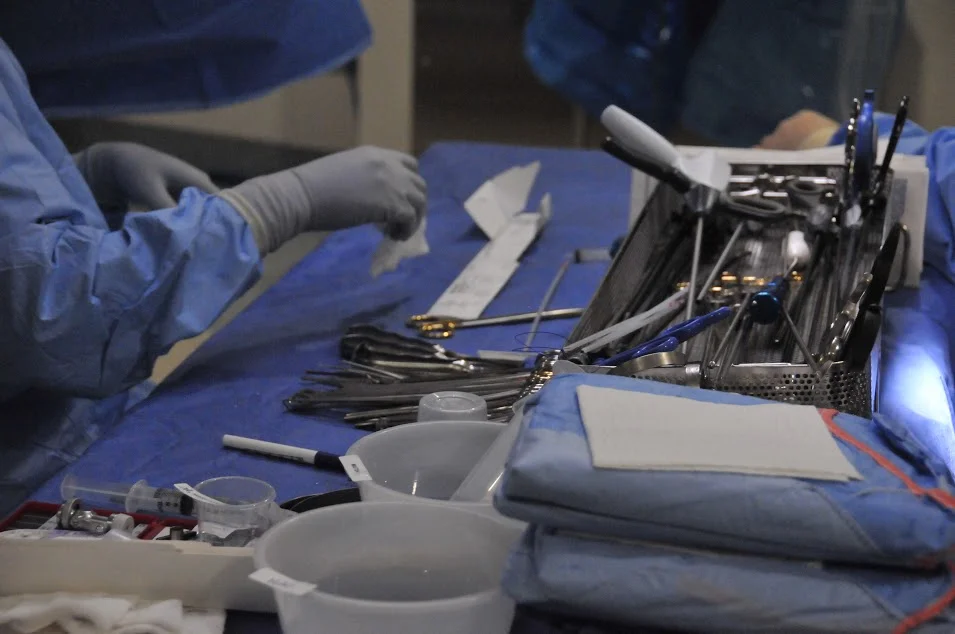© Center for Endometriosis Care/Ken Sinervo MD, MSc, FRCSC. All rights reserved. No reproduction permitted without written permission. Revised since original publication and current as of 2023. No external funding was utilized in the creation of this material. The Center for Endometriosis Care neither endorses nor has affiliation with any resources cited herein. The following material is for informational purposes only and does not constitute medical advice.
PLATELET RICH PLASMA THERAPY
Regenerative biomedicine has continued to progressively emerge at the forefront of healthcare in a number of medical disciplines. Among them is Platelet Rich Plasma Therapy (PRP). In a formulation that delivers the patient’s own (“autologous”) platelets, PRP is processed to produce a bioactive substance that is applied to the wound in order to restore the natural balance and stimulate healing processes. These concentrated platelets contain a huge reservoir of bioactive proteins, including growth factors that are very important to tissue regeneration, healing, and repair. Many physicians from varied disciplines consider PRP therapy as an emerging treatment option for multiple conditions, not limited to tendon, muscle, bone and surgical injuries or trauma, as well as in recent years, dyspareunia. PRP therapy is outlined in the scientific literature quite extensively as accelerating the healing process, reducing pain, and improving function; our experiences using PRP here at the CEC as an early adopter of the therapy bear this data out.
Essentially, the patient’s blood is collected and centrifuged at varying speeds until it separates into 3 layers: platelet poor plasma (PPP), platelet rich plasma (PRP), and red blood cells [Wang et al.]. In our institution, blood is drawn in the patient holding area or operating room prior to the induction of anesthesia, depending on the specifics of the procedure. After consent is obtained, a small amount of blood is taken from the patient and placed in a centrifuge. The centrifuge spins the blood and the platelet rich plasma is separated. The PRP is injected under sterile condition precisely in the targeted area(s). We do this to facilitate and boost increased infection prevention, wound healing, and tissue regeneration as outlined above.
PRP has been investigated since the early 1990s and is not ‘new;’ use of autologous PRP was first used in 1987 by Ferrari et al. [Sampson, Gerhardt, Mandelbaum. Platelet rich plasma injection grafts for musculoskeletal injuries: a review. Curr Rev Musculoskelet Med. 2008 Dec;1(3-4):165-74]. Today, we know PRP has the potential not only to improve hemostasis, but also to contribute greatly to the biological effect on wound healing. Several advancements in this innovative area of therapy (CPT 0232T) have been brought forth over the past decade, and the body of literature continues to grow at rapid pace with the procedure gaining traction. The disciplines of (including but not limited to) plastic surgery, dentistry, musculoskeletal, otolaryngology, spinal, and gynecology all use PRP therapy to deliver growth factors to optimize healing in their patients. In the United States, even early application was estimated to be used in Obstetrics & Gynecology specifically in more than 100,000 cases annually [Stammers, Trowbridge, Marko, Woods, Brindisi, Pezzuto, Klayman, Fleming, Petzold. Autologous Platelet Gel: Fad or Savoir? Do We Really Know? The Journal of ExtraCorporeal Technology. 2009;41:P25–P30]. The role of PRP in the directed stimulation of mesenchymal stem cells and promise of assistance in the simultaneous healing of several tissues after trauma or elective surgery is well-accepted.
Our Center has been using PRP now for years, across several hundreds of patients to date. Based on our follow-up and observational data in combination with practical experience, we have found PRP to be a viable option as an adjunct to our Laparoscopic Excision and gynecologic endoscopy procedure(s). While we have only needed to re-operate on less than ten of those PRP patients, the re-operative results imply there is less adhesion formation - hence less adhesion-related pain, as well as less fibrosis (which can cause pain as well). Again, PRP is not new to our discipline - for example, even 15 years ago, a phase I/II trial of autologous platelet tissue graft in gynecologic surgery designed to evaluate toxicity and efficacy on decreasing pain was conducted of 55 consecutive patients undergoing gynecologic surgery, matched with 55 patients from the previous 6 months. Results from this study revealed median pain on the day of surgery (2.7 - mild) in the autologous platelet tissue graft group vs. 6.7 (severe) in the control group. Likewise, pain on postoperative day 1 was 2.1 (mild) in the autologous platelet tissue graft group vs. 5.5 (moderate) in the control group. Median of morphine per hospital stay for the autologous platelet tissue graft group was 17 mg (range 1-98 mg) vs. 26 mg (range 3-90 mg) in the control group, which was statistically significant at p=.02. Importantly, there were no adverse effects associated with autologous platelet tissue graft, and patient pain was significantly reduced [Fanning, Murrain, Flora, Hutchings, Johnson, Fenton. J Minim Invasive Gynecol. Phase I/II prospective trial of autologous platelet tissue graft in gynecologic surgery. 2007 Sep-Oct;14(5):633-7].
Further, Shackelford et al. conducted a double-blind, randomized, placebo-controlled trial using recombinant growth factor to treat and study the effects on wound healing. The patients in the placebo group closed 54 +/- 26 days post-operatively, whereas wounds of patients in the treatment group closed in 35 +/- 15 days (P =.05). That preliminary study also suggested that topical application of 0.01% recombinant human PDGF gel accelerated healing of separated surgical wound significantly [Shackelford, Fackler, Hoffman, Atkinson. Use of topical recombinant human platelet-derived growth factor BB in abdominal wound separation. Am. J. Obstet. Gynecol., 2002, 186(4), 701-704]. Several endometrial tissue remodeling studies have also been performed on the proliferation, motility, invasiveness and gel contractility of cultured human endometrial stromal cells [Matsumoto, Nasu, Nishida, Ito, Bing, Miyakawa. Regulation of proliferation, motility, and contractility of human endometrial stromal cells by platelet-derived growth factor. J. Clin. Endocrinol. Metab., 2005, 90(6), 3560-3567]. This is just a small sampling of related data.
Those with cancer not in remission for at least 5 years, certain other malignancies or blood-borne illnesses, current infections, on high dosages of Coumadin or other blood thinners, and certain other medical issues may not be candidates for PRP.
WHAT ARE POSSIBLE COMPLICATIONS?
It is well accepted that PRP features the relative ease of preparation, multiple applicability in varied clinical settings, extremely favorable safety profiles and many beneficial outcomes, making it a very promising therapeutic approach for regenerative and healing treatments. Since PRP is prepared from autologous blood donation, there exists minimal risk for disease transmission, immunogenic reactions, malignancies, and negative side effects.
Infection is a rare but potential complication of any blood draw or injection. It may take several days to develop and be accompanied by pain, swelling or redness at the site as well as fever or chills. Rarely, patients may experience bleeding at the site. The application of direct pressure will result in cessation of most bleeding. Uncontrollable deep or superficial bleeding or any symptoms at all should be reported immediately by calling us at 770-913-0001.
MORE INFORMATION
For additional reading, feel free to review this small sampling of the abundant PRP data profiled in the peer-reviewed medical literature demonstrating use of PRP as a well-established adjunct with beneficial outcome and high safety profile:
Prodromidou A, Pavlakis K, Pergialiotis V, Frountzas M, Machairas N, Kostakis ID, Korou LM, Stergios K, Dimitroulis D, Vaos G, Perrea DN. Healing after Resection of Colonic Endometriosis and Growth Factor-enriched Agents: An Experimental Rat Model. J Minim Invasive Gynecol. 2019 Mar - Apr;26(3):463-470.
Sampson, Gerhardt, Mandelbaum. Platelet rich plasma injection grafts for musculoskeletal injuries: a review. Curr Rev Musculoskelet Med. 2008 Dec;1(3-4):165-74
Stammers, Trowbridge, Marko, Woods, Brindisi, Pezzuto, Klayman, Fleming, Petzold. Autologous Platelet Gel: Fad or Savoir? Do We Really Know? The Journal of ExtraCorporeal Technology. 2009;41:P25–P30
Fanning, Murrain, Flora, Hutchings, Johnson, Fenton. J Minim Invasive Gynecol. Phase I/II prospective trial of autologous platelet tissue graft in gynecologic surgery. 2007 Sep-Oct;14(5):633-7
Mongardini, Iachetta, Cola, Maturo, Giofrè, Custureri. Low rectovaginal fistula treated with platelet-rich plasma (PRP). G Chir. 2009 Nov-Dec;30(11-12):507-9
Hibner, Castellanos, Drachman, Balducci. Repeat operation for treatment of persistent pudendal nerve entrapment after pudendal neurolysis. J Minim Invasive Gynecol. 2012 May-Jun;19(3):325-30
Platelet-Rich Plasma in Urogynecology: From Basic Science to Clinical Applications. Proceedings of IUGA 20I4
Einarsson, Jonsdottir, Mandle. Use of autologous platelet gel in female pelvic organ prolapse surgery: a feasibility study. J Minim Invasive Gynecol. 2009 Mar-Apr;16(2):204-7
Shackelford, Fackler, Hoffman, Atkinson. Use of topical recombinant human platelet-derived growth factor BB in abdominal wound separation. Am. J. Obstet. Gynecol., 2002, 186(4), 701-704
Matsumoto, Nasu, Nishida, Ito, Bing, Miyakawa. Regulation of proliferation, motility, and contractility of human endometrial stromal cells by platelet-derived growth factor. J. Clin. Endocrinol. Metab., 2005, 90(6), 3560-3567
Everts, Hoogbergen, Weber, Devilee, van Monftort, de Hingh. Is the Use of Autologous Platelet-Rich Plasma Gels in Gynecologic, Cardiac, and General, Reconstructive Surgery Beneficial? Current Pharmaceutical Biotechnology, 2012, Vol. 13, No. 1
Whitlow, Shackelford, Sievert, Sistino. Barriers to the acceptance and use of autologous platelet gel. Perfusion. 2008;23:283–9
Dhillon et al. Platelet Rich Plasma Therapy: Future or Trend? Arthritis Research & Therapy 2012, 14:219
Nguyen, Borg-Stein, McInnis. Applications of Platelet-Rich Plasma in Musculoskeletal and Sports Medicine: An Evidence-Based Approach. PM R March 2011. Vol. 3, 226-250
Vaught, Cole. Coding and Reimbursement Issues for Platelet-Rich Plasma. Oper Tech Sports Med 2011, 19:185-189

